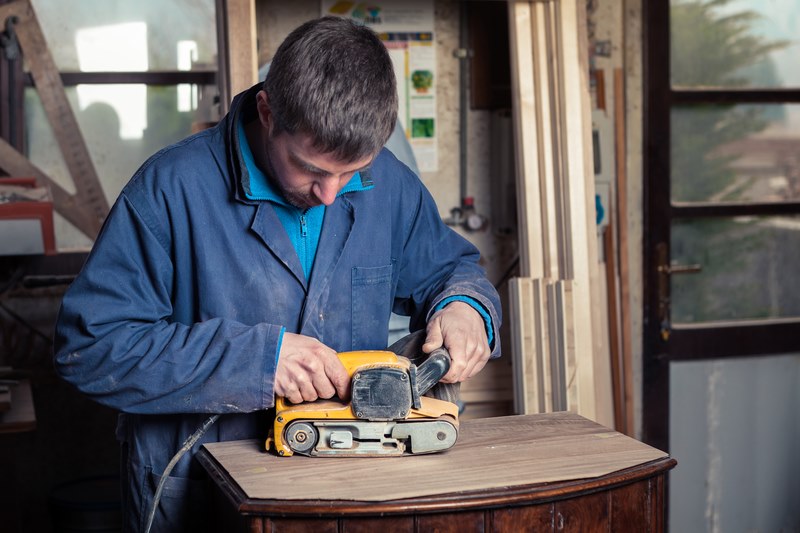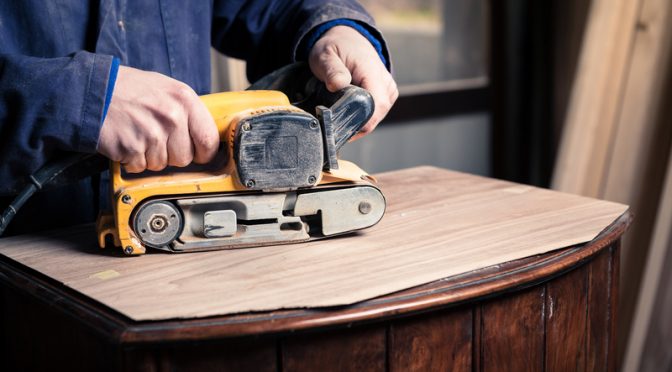What is a drum sander?
A drum sander is a power tool that is generally usually used to sand flat surfaces, such as wooden floors. The cylindrical wheel (drum) has an abrasive material such as sandpaper attached to its surface, and the drum is moved at speed by an electric motor in order to sand the surface.
What is a belt sander?
A belt sander is a power tool that used a continually moving abrasive belt to sand a variety of surfaces. This belt is moved continually round and round by an electric motor in order to sand the surface. Belt sanders are often upright and used to sand and shape smaller pieces of wood and other materials, but they are also frequently used to remove paint, varnishes or finished from wood.
Each of these sanders are excellent for sanding wooden floors and are the two main tools we use at Floor Sander Hire and recommend for our customers use for their next floor sanding project. These machines are both very big and pack a lot of power, so need to be used with care. For instance, stopping in one place for too long while sanding a floor with a belt or drum sander can damage the floor by sanding too deep in one area. This can be costly and time consuming to fix, and may not ever be able to be restored to its original condition and levelling.
Each sander can be fitted with sandpaper with different levels of abrasiveness to get a different level of sanding from the drivers, and the kind you want will depend on the condition of the floor and how deep you wish to sand.

Controlling the floor sander
Controlling the movement of the sander takes practise and a bit of strength too, so it’s advisable to trust a professional to operate this heavy-duty machinery. If you decide to operate a drum or belt sander yourself, be sure to first test out the feel of the sander in an area of the room that is less noticeable, such as underneath where furniture usually sits or in the corner of the room. Get a sense of the sander and how it feels to hold and move the machine before you try to sand an entire room. Always move in slow, even movements to avoid over-sanding an area.
You can cover most hardwood floor areas in this way, starting with a course, then medium, then fine sandpaper, but for the hard-to-reach places in the corners of the room and along the edge, you will need to use an edge sander. As you use these sanders, you should sweep away the dust as needed to keep a clean path, and then treat the floor at the end of your sanding session with a hardwood finish or oil treatment to help bring out its shine.
We hope this article has explained more about these two types of sanders and how they are used, but if you want to find out more about these sanders, simply click here to visit our sander products for hire page.

